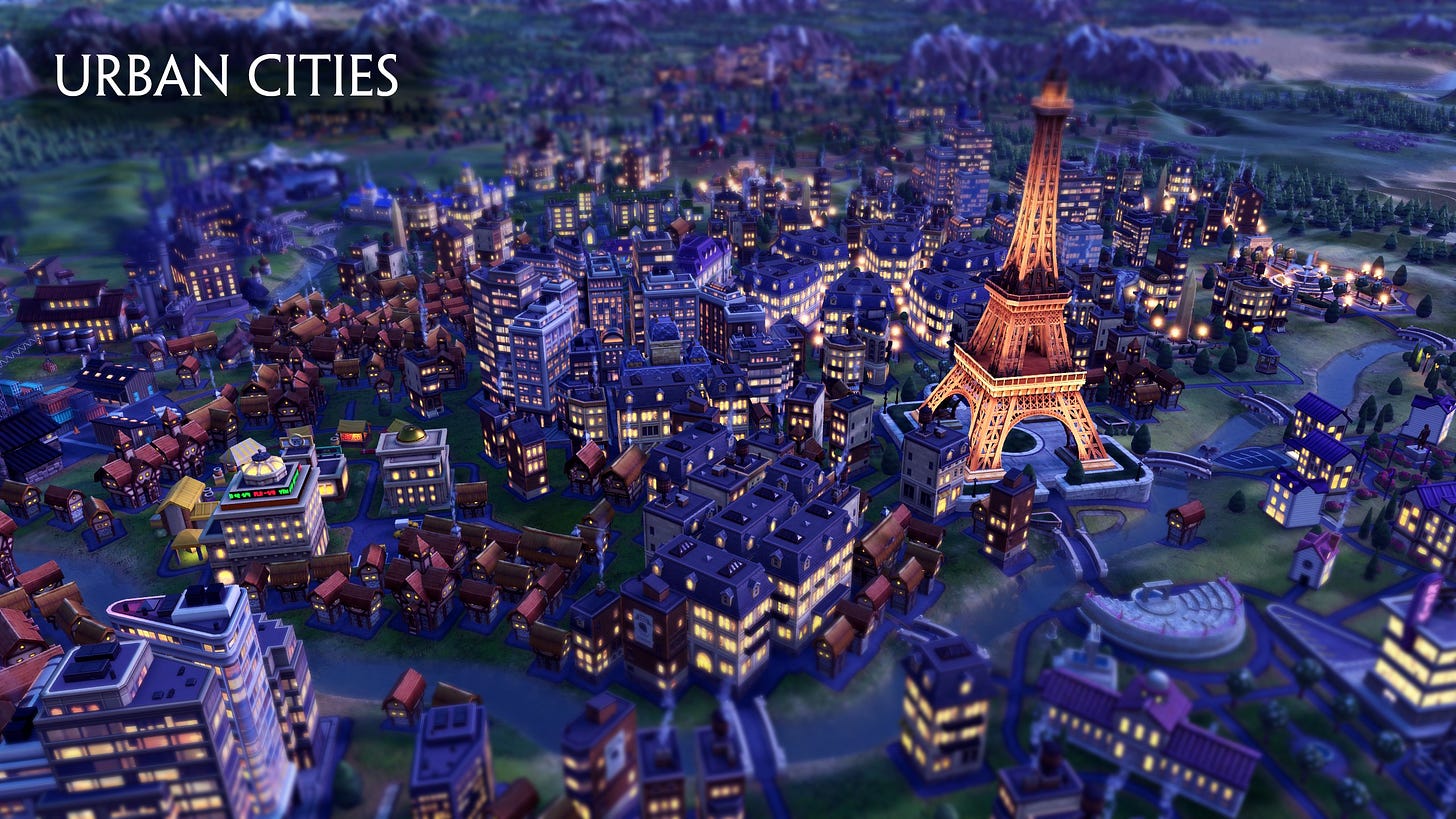[This post is part of a larger strategy guide for Civilization 6]
Should you build a few cities with massive populations that are economic powerhouses, or should you focus on many smaller cities that can specialize and parallelize?
The answer is "do both", of course. But all other things being equal, wide generally plays better in civ 6 than tall.
Tall strategies are generally easier to manage and optimize. You have fewer cities, so at any given time there's just less to think about. That in turn frees up valuable time to think about perfect optimization, such as planned adjacencies or triangle farms. Fewer cities means less war, because you take up and require fewer tiles; it also generally means easier defense, because you need to cover a smaller area. High production cities make it much easier to win certain races — wonders, most obviously, but also great people. High production also makes it very easy to pivot what you're building, so you can switch from infra ramping to war very quickly if necessary. And of course, high populations can synergize really well with per-pop bonuses provided by some religious beliefs or civ abilities.
Wide strategies generally have fewer problems with accessing and maintaining lines to strategic resources, which is critically valuable in the late game when all your units and cities need oil or uranium. They synergize really well with the district system — more cities means more districts means more yields and great people (it's generally pretty easy to get a city up to at least 4 pop, which let's you build two districts). Generally, a wide strategy will have more population growth overall, because you are less constrained by housing if you manage to build on fresh water. And of course, wide strategies let you parallelize your production.
Civ has systems in place that are meant to balance these strategies.
Housing and food production are obvious limiters for tall strategies — in order to build larger cities, you need to invest in granaries, aqueducts, sewers, neighborhoods, farms, fisheries, pastures, water mills, and more. Building that infrastructure takes time, maintaining food surplus takes patience, and so on.
On the other hand, amenities and loyalty are limiters for wide strategies. One luxury resource can only be shared among 4 cities; low population, low production cities still end up using amenities, which can dampen the productivity of the rest of your cities. Meanwhile, cities far away from your population centers may struggle with staying loyal to your empire, and you might have to expend a fair bit of resources retaining them.
So why prefer wide?
Housing is a much harder cap than either loyalty or amenities, and the game really rewards having a lot of districts. It's generally pretty easy to get cities up to 7 population without putting too much effort in, especially if you've built the city before the industrial age. Generally speaking, the bigger your empire is, the easier it is to get a new city "online" (i.e. productive and useful) — you generally have access to more traders, you can build more builders to send over to the new city, etc. And with the right governors and policies, building a ton of settlers isn't that painful.
Because it often makes sense to settle far and wide, I'll spend most of the classical era and a solid chunk of the medieval era settling cities, as many as I can in the widest geographic area I can control without bumping into other people. Generally I'll aim for 8-10 cities that I own, and by the end game I'll have at least 15-20 (including cities taken from other civs).
With ample planning, you generally don't have to lock in to only one of these strategies. The best civ players know how to build tons of cities and have all of them be population power houses. We'll talk more about how to grow population and make cities productive in the tactics sections later on.


